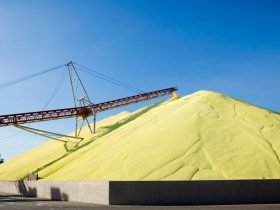The strike by auto workers won’t hurt the U.S. in the short run, but a months-long dispute could sting the economy and potentially stall the Federal Reserve’s fight to tame inflation.
Several days into the standoff, the United Auto Workers has acted in piecemeal fashion. The union has only launched strikes at three of the 25 U.S. plants run by the Big Three of General Motors
GM,
Ford
F,
and Stellantis
STLA,
And less than 10% of the UAW’s 146,000 members have taken part.
The union’s initial tactics won’t put much of a dent in the economy for now. The number of employees who could be potentially involved is still quite small — less than 0.1% of the entire U.S. workforce — and the automakers have built up their inventory of new cars ahead of the strike.
A longer and all-encompassing stalemate, say several months or more, could prove more destructive.
S&P Global estimates a short strike could slightly undercut U.S. growth in the third quarter. If it goes on for a couple of months, though, the impasse could shave more than two percentage points from gross domestic product in the fourth quarter.
That would be a big hit to the economy. After all, 2% growth is viewed as the goal for the economy in the long run.
Typically such a shortfall in U.S. growth would be made up in following months as striking auto employees went back to work and carmakers ramped up production. But that assumes a negotiated settlement has little or no influence on U.S. inflation.
That’s far from certain.
The UAW has asked for a roughly 35% increase in wages over four years. The companies have offered about 20%.
In either case, automakers are going to have to foot a larger bill for labor. The only way to offset those increases is to accept lower profits, raise prices on car buyers or, less likely, make workers far more productive.
Surging car prices were a major source of U.S. inflation in 2021 and 2022, though for a very different reason. A global shortage of computer chips hurt production and the scarcity of vehicles for sale drove up prices for new and used cars.
By the middle of 2022, car prices had risen more than 20% year over year.
Prices have since leveled off, but the cost of buying a car is still at or near a record high.
Perhaps even more important, the UAW has revived the idea of cost-of-living adjustments, a relic of the 1970s and 1980s.
The union wants workers to receive bigger pay increases each year than a new contract would call for if inflation turned out to be higher than forecast. The auto companies have resisted the idea, offering potential lump-sum bonuses instead.
Cost-of-living adjustments in employee contracts in the 1970s, when unions had more power, acted as dry fuel in the devastating wage-price spiral that helped to drive up U.S. inflation and shook the economy to its core.
“Whether it sticks remains to be seen, but its inclusion drives home the importance to the Fed of restoring price stability before inflation becomes more broadly embedded in the mindset of workers,” said Bob Schwartz, senior economist at Oxford Economics.
The Fed itself is expected to pay close attention to the dispute, not to mention a Biden administration gearing up for the 2024 presidential election.
A long standoff could deplete the number of vehicles for sale, disrupt supply chains and drive prices up again.
“A broad, extended UAW strike would also cause headaches for the Federal Reserve’s fight against high inflation,” said Gus Faucher, chief economist at PNC Financial Services.
In a worst-case scenario, he said, “this could lead the Fed to raise the fed funds rate later this year to reduce overall demand in the U.S. economy, increasing the risk of recession in 2024.”
Read the full article here










Leave a Reply